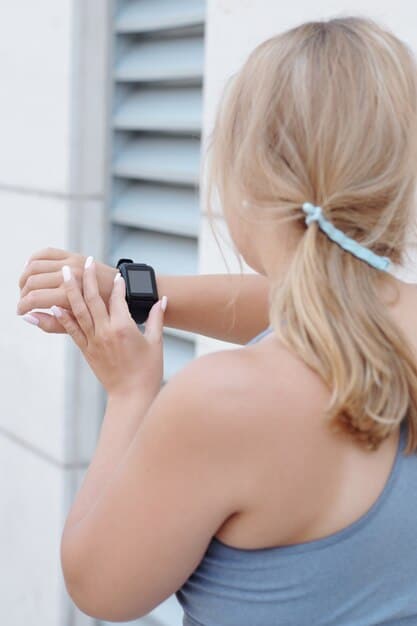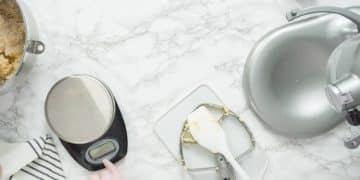Does This New Fitness Tracker Accurately Measure Your Calories? A Detailed Review

Does this new fitness tracker accurately measure your calories? This review delves into the accuracy of the latest fitness tracker in measuring calorie expenditure, examining its technology, user experiences, and comparing its performance against established standards.
Are you questioning the accuracy of your new fitness tracker’s calorie measurements? This detailed review explores whether the latest fitness trackers can truly deliver reliable calorie counts to help you manage your fitness goals.
Evaluating the Accuracy of Calorie Measurement in Fitness Trackers
Fitness trackers have become increasingly popular for monitoring physical activity, but how accurate are they regarding calorie measurement? Understanding the factors that influence the accuracy of these devices can help users set realistic expectations and make informed decisions about their fitness routines.
Technological Aspects Influencing Calorie Measurement
The technologies used in fitness trackers play a significant role in their ability to accurately measure calorie expenditure. While most trackers use accelerometer data to estimate movement and calculate calories burned, the precision can vary based on the sophistication of the sensors and algorithms used.
- Accelerometer Technology: Accelerometers detect movement and calculate steps taken, which the device then uses to estimate calorie burn. The accuracy here relies on the sensitivity of the accelerometer.
- Heart Rate Monitoring: Some trackers use heart rate sensors to improve calorie estimates. Higher heart rates generally indicate more intense activity and higher calorie expenditure.
- Algorithm Complexity: The algorithms that convert sensor data into calorie estimates vary from device to device, influencing overall accuracy. More sophisticated algorithms consider various factors like age, weight, and gender.
For example, a tracker using a high-quality accelerometer and continuous heart rate monitoring, coupled with a personalized algorithm, is likely to provide more accurate calorie estimates than a basic step counter.

How Fitness Trackers Estimate Calorie Burn: An In-Depth Look
Fitness trackers estimate calorie burn through a combination of sensor data and user-inputted information. They typically use a formula that incorporates your age, weight, gender, height, and activity level to calculate basal metabolic rate (BMR), which is the number of calories your body burns at rest.
Understanding Basal Metabolic Rate (BMR) and Calorie Estimation
To evaluate how fitness trackers estimate calorie burn, it’s crucial to understand the concept of BMR. This forms the foundation for calculating daily calorie needs and how activity levels impact overall calorie expenditure.
- BMR Calculation: Trackers use formulas like the Harris-Benedict equation or Mifflin-St Jeor equation to estimate BMR, based on user-provided data.
- Activity Level Integration: Your selected activity level (sedentary, lightly active, moderately active, very active) multiplies your BMR to estimate your daily caloric needs.
- Sensor Data Overlay: Data from accelerometers and heart rate sensors is then layered onto this baseline to estimate calories burned during physical activity.
By combining these different data points, fitness trackers provide an estimate of total calorie expenditure, but it is important to remember that these are still estimates.
User Experience and Real-World Accuracy Testing
User experience can significantly impact the perceived accuracy of a fitness tracker’s calorie measurements. Factors like how the device is worn, the consistency of use, and individual physiological differences can all play a role.
Common Pitfalls in Using Fitness Trackers for Calorie Tracking
Several common mistakes can undermine the accuracy of calorie tracking. These include incorrect setup, inconsistent wear, and failure to properly calibrate the device.
- Incorrect Setup: Entering incorrect personal information (age, weight, height) can lead to inaccurate BMR calculations and calorie estimates.
- Inconsistent Wear: Wearing the tracker loosely or inconsistently, especially during workouts, can affect the accelerometer and heart rate readings.
- Calibration Issues: Some trackers require calibration for activities like treadmill running. Neglecting to calibrate can lead to inaccurate distance and calorie data.
To maximize accuracy, users should carefully follow the manufacturer’s instructions, ensure the device fits snugly, and wear it consistently, especially during physical activities.

Comparing Fitness Tracker Calorie Counts to Scientific Standards
Independent testing and comparisons against scientific standards are essential for assessing the real-world accuracy of fitness trackers. Many studies have evaluated the calorie measurement capabilities of popular devices under controlled conditions.
Insights from Independent Studies and Research
Numerous studies have analyzed the performance of fitness trackers in measuring calorie expenditure, providing valuable insights into their accuracy limitations.
- Variations in Accuracy: Research consistently shows that the accuracy of calorie measurements varies widely among different models and brands.
- Underestimation at High Intensities: Some studies indicate that trackers tend to underestimate calorie burn at higher exercise intensities.
- Impact of Body Composition: Individual body composition and metabolic rates can affect the accuracy of calorie estimates, as generic algorithms may not account for these variations.
These studies often reveal that while fitness trackers can provide a reasonable estimate, users should be cautious about taking the calorie counts as precise values.
The Role of Algorithms and Data Interpretation
The algorithms used by fitness trackers to interpret data from sensors significantly influence the accuracy of calorie measurement. These algorithms convert raw data into meaningful estimates of energy expenditure.
The Complexities Behind the Calorie Estimation Algorithms
Understanding the complexities of these algorithms provides a clearer picture of the limitations and potential inaccuracies in calorie estimation.
Fitness trackers typically use proprietary algorithms that combine data from accelerometers, heart rate sensors, and user-provided information. These algorithms are designed to estimate energy expenditure based on established physiological principles. For example, increased movement and heart rate generally correspond to higher calorie burn. However, the precise relationship can vary due to factors like individual metabolism, fitness level, and exercise efficiency.
Moreover, the algorithms may not fully account for non-exercise activity thermogenesis (NEAT), which includes activities like fidgeting or standing, potentially leading to underestimation of daily calorie expenditure. Different brands also employ different algorithms, resulting in varied accuracy levels.
Therefore, while fitness trackers can offer valuable insights into activity levels, it’s important to interpret calorie estimates with caution.
Making Informed Decisions About Using Fitness Trackers for Calorie Tracking
To make informed decisions about using fitness trackers for calorie tracking, it’s essential to combine the data with an understanding of your own body and lifestyle. Relying solely on tracker data without considering other factors can lead to unrealistic expectations or misguided fitness strategies.
Contextualizing the Data
Fitness trackers offer valuable insights into activity levels by providing relative estimates of calorie expenditure. However, users can maximize their effectiveness by integrating this information with other essential aspects of health and fitness. It’s crucial to combine tracker data with a holistic understanding of one’s individual physiology, lifestyle, and nutritional intake.
By doing so, fitness trackers serve as a tool that complements rather than substitutes personal awareness.
| Key Point | Brief Description |
|---|---|
| 📊 Accuracy Factors | Sensor quality, algorithms, and user data all influence calorie accuracy. |
| ⚙️ BMR Estimation | Fitness trackers estimate calorie burn using BMR and activity level. |
| ⚠️ Common Mistakes | Incorrect setup and inconsistent wear can affect accuracy. |
| 🔬 Independent Studies | Research shows calorie measurement accuracy varies among models. |
Frequently Asked Questions
▼
Calorie measurement accuracy varies widely among different fitness tracker models and brands. Factors like sensor quality, algorithms, and user-entered data all play a role.
▼
The accuracy of calorie measurements can be influence by the sensors used, how consistently one wears the device, and the algorithms trackers use to extrapolate the data.
▼
They can be a good overall estimate of physical activity, but it’s best not solely rely on fitness trackers for the total volume of calories burned.
▼
To avoid the pitfalls when wearing a fitness tracker, be sure to input the correct information and calibrating the devices based on the activity you are tracking.
▼
Most fitness trackers measure calorie output through accelerometers, and the data that they gather when you put in your personal infomation.
Conclusion
In conclusion, while fitness trackers provide valuable insights into your activity levels and estimated calorie expenditure, understanding their limitations and supplementing their data with other health and lifestyle factors is crucial for making informed decisions about your fitness journey.
![Is the updated [product] truly better? A deep dive into enhancements Is the updated [product] truly better? A deep dive into enhancements - Cover Image](https://youforyous.com/wp-content/uploads/2025/07/youforyous.com_4_1753831175_a20b5125_cover-360x180.jpg)




